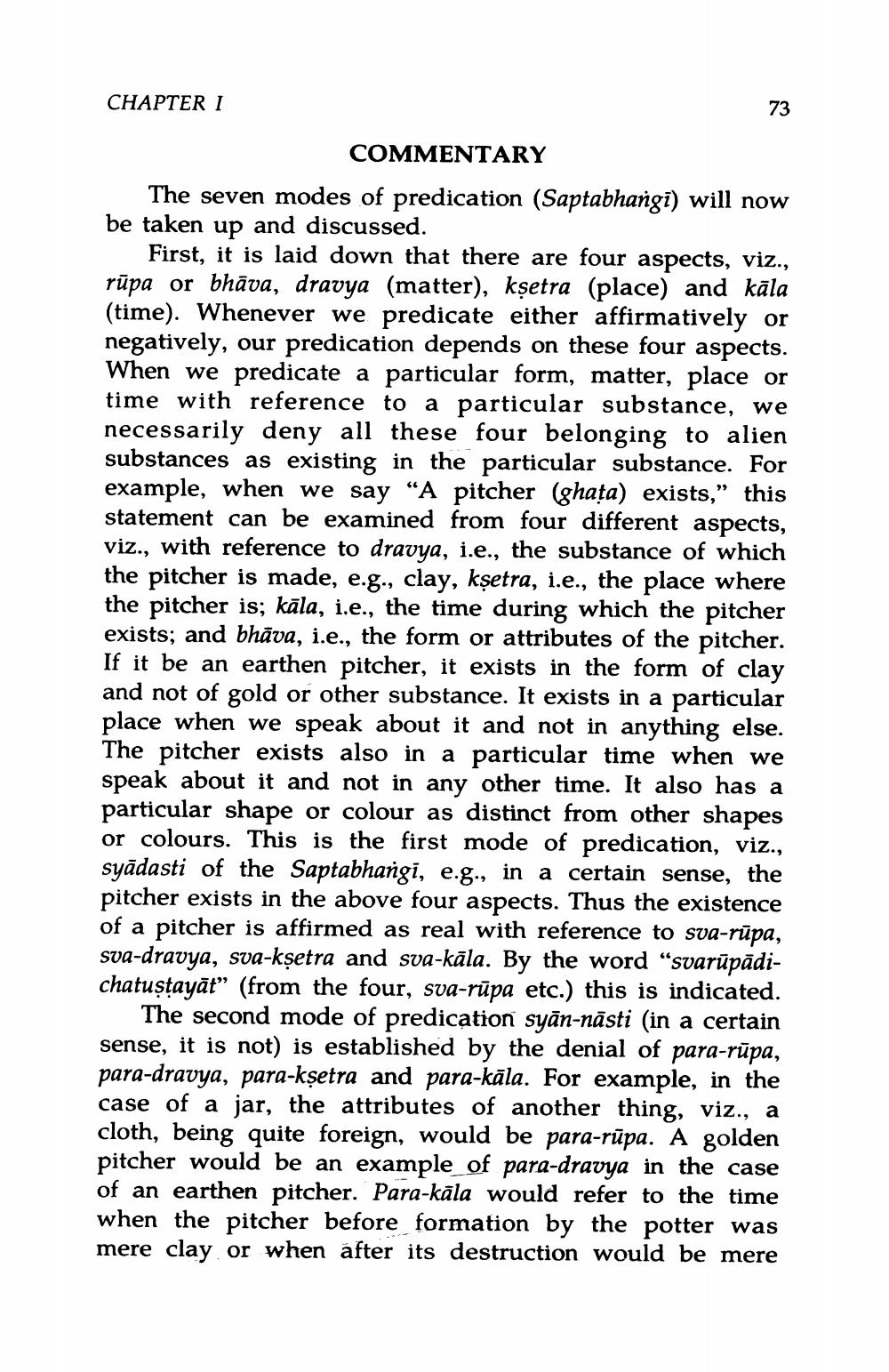________________
CHAPTER I
COMMENTARY The seven modes of predication (Saptabhangi) will now be taken up and discussed.
First, it is laid down that there are four aspects, viz., rūpa or bhāva, dravya (matter), kşetra (place) and kāla (time). Whenever we predicate either affirmatively or negatively, our predication depends on these four aspects. When we predicate a particular form, matter, place or time with reference to a particular substance, we necessarily deny all these four belonging to alien substances as existing in the particular substance. For example, when we say "A pitcher (ghata) exists,” this statement can be examined from four different aspects, viz., with reference to dravya, i.e., the substance of which the pitcher is made, e.g., clay, kşetra, i.e., the place where the pitcher is; kāla, i.e., the time during which the pitcher exists; and bhāva, i.e., the form or attributes of the pitcher. If it be an earthen pitcher, it exists in the form of clay and not of gold or other substance. It exists in a particular place when we speak about it and not in anything else. The pitcher exists also in a particular time when we speak about it and not in any other time. It also has a particular shape or colour as distinct from other shapes or colours. This is the first mode of predication, viz., syādasti of the Saptabhangi, e.g., in a certain sense, the pitcher exists in the above four aspects. Thus the existence of a pitcher is affirmed as real with reference to sva-rūpa, sva-dravya, sva-ksetra and sva-kāla. By the word "svarūpādichatuștayāt” (from the four, sva-rūpa etc.) this is indicated.
The second mode of predication syān-nāsti (in a certain sense, it is not) is established by the denial of para-rūpa, para-dravya, para-kşetra and para-kāla. For example, in the case of a jar, the attributes of another thing, viz., a cloth, being quite foreign, would be para-rūpa. A golden pitcher would be an example of para-dravya in the case of an earthen pitcher. Para-kāla would refer to the time when the pitcher before formation by the potter was mere clay or when after its destruction would be mere




